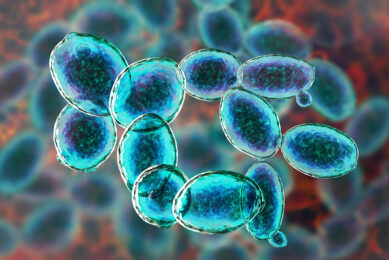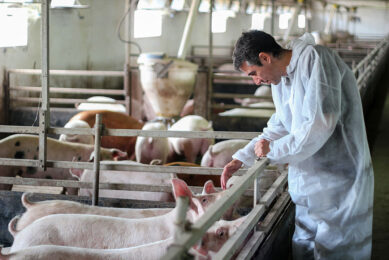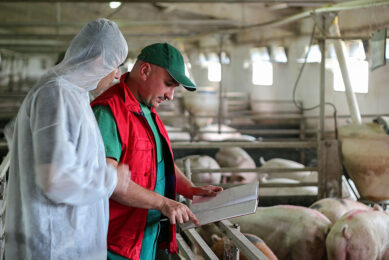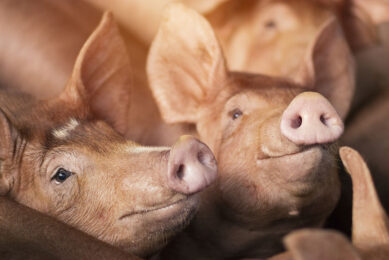Lawsonia intracellularis: A challenging pathogen
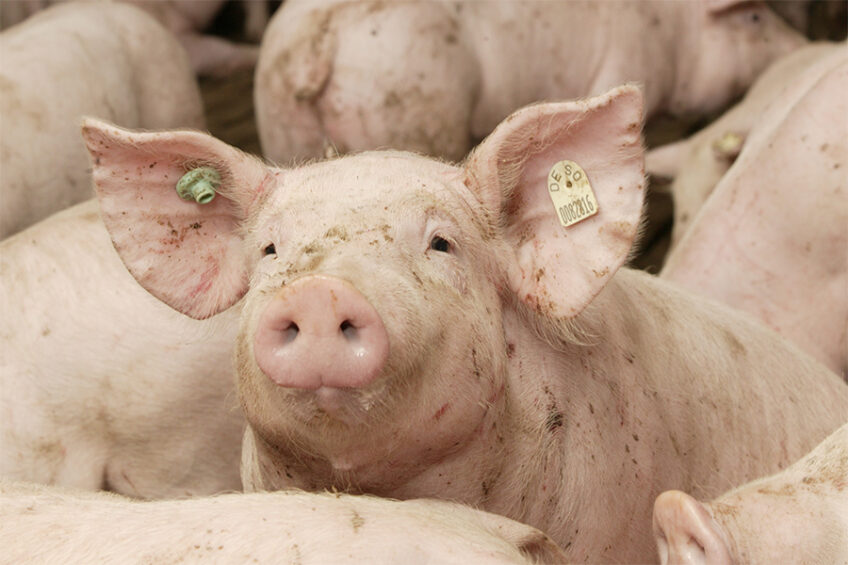
Enteric infections are a thorn in the side of the global swine industry and are often caused by bacterial pathogens. In grow-finish pigs, Lawsonia intracellularis is one of the most important and challenging ones. This four-part article series is a journey from bacteria ecology and prevalence to solutions for control of this major pathogen. In this article: definition and spread of the disease.
Even on farms with high standards of biosecurity and good herd management practices, it remains a challenge to keep bacteria and viruses out at all times. A variety of different pathogens are known to cause enteric infections in pigs. In grow-finish pigs, research showed that L. intracellularis often outnumbers other pathogens, based on the bacteria found in pig faecal samples. This makes the fight against L. intracellularis a priority to restore pig welfare and productivity.
The bacteria and the disease
L. intracellularis was named after the late Dr Gordon Lawson, who detected and characterised it initially at the University of Edinburgh in the UK. This obligate, intracellular gram-negative bacterium naturally infects the cell lining of the intestine of pigs and horses, but also of smaller animals such as rodents. The latter means that pest animals can be a reservoir on pig farms. Pigs are infected by the oral route with contaminated faeces.
Infection of the intestinal cells causes the so-called proliferative enteropathy (PE) marked by proliferative and haemorrhagic lesions, along with thickening of (mainly) the ileum wall, but also other parts of the intestines. That in turn often leads to diarrhoea and is associated with losses in animal performance and margins. In practice, the set of symptoms is mostly referred to as “ileitis”.
Different forms and severity
Pigs can suffer from 3 clinically different forms of the disease.
The acute form is associated with anorexia, bloody diarrhoea (black/tarry colour), weight loss, occasional vomiting and sudden death. This acute form is commonly observed in young adult breeding animals between four and 12 months of age.
The chronic form of the disease is characterised by loose to watery diarrhoea, variable anorexia and failure to gain weight despite eating. Pigs between the ages of six and 20 weeks are mostly sensitive to this form.
The third form (subclinical) of the disease is the most lingering, hence is related to severe long-lasting damage. This milder version of ileitis has no clinical signs such as diarrhoea, which makes it difficult to diagnose for farmers and veterinarians. However, the subclinical form of the disease is usually associated with significant impact on growth, feed conversion efficiency, uniformity and health, with huge economic losses as a result.
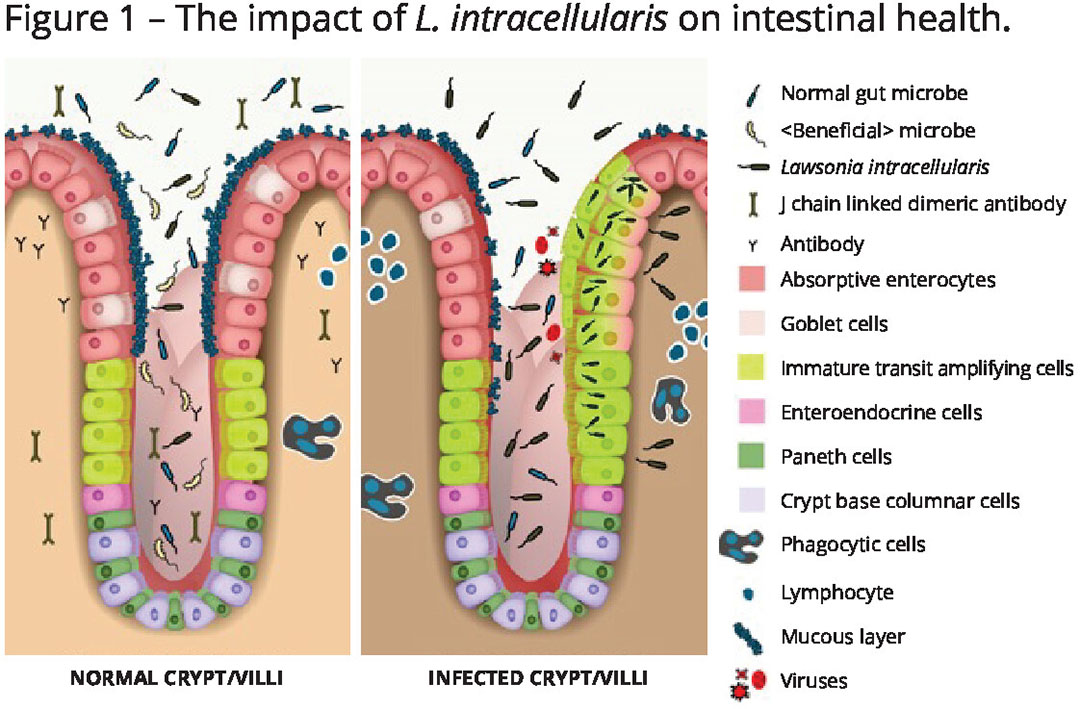
Impact on intestinal health
Once L. intracellularis infects intestinal epithelial cells, hyperplasia of immature cells and swelling and thickening of the intestinal mucosa can be observed. That in turn leads to impaired gut function, hence decreased digestibility and absorption of nutrients and decreased absorption of water and electrolytes (spurring the onset of diarrhoea). The infection also leads to a disruption of mucosal and gut integrity, which in turn may open the door for other enteric pathogens such as Salmonella, Brachyspira and Escherichia coli, resulting in severe and complex co-infection (Figure 1).
Impact on gut microbiota
A well-balanced and diversified microbiome is important to enhance health and performance of animals. But when the healthy microbiota is disrupted (also known as dysbiosis), enteric pathogens can flare up and cause infection and compromised gut integrity. In the case of L. intracellularis, this bacterium needs other anaerobic organisms to establish an infection.
At the same time, an L. intracellularis infection can alter the microbial community structure and composition of the small and large intestinal microbiome of pigs, causing dysbiosis and increasing the risk of co-infection with other pathogens, as mentioned above. Modifying the gut microbiota of pigs (increasing diversity and shifting the microbiota towards beneficial bacteria) using probiotic feed additives has been shown to result in a decrease of L. intracellularis faecal shedding in infected pigs, suggesting a role for probiotics in controlling ileitis in pigs.
Widespread prevalence
L. intracellularis is ubiquitous. Research showed that the detection rate of this pathogen is over 90% in Western European farms, 88.5% on Russian farms, 77–90% on US farms and that it is always present on investigated pig farms in China and Brazil. Although some of these high numbers in the studies may be explained by the inclusion of farms with a history of diarrhoea outbreaks, the percentages are expected to be very high and therefore worrying.
The active infection mainly occurs at the grow-finish stage, as shown by several studies in Western Europe, Brazil and the US that measured the highest occurrence of bacterial detection or seroconversion in this age group. Clinical ileitis is not always noticed on all farms. For example, surveys based on a questionnaire among veterinarians and farmers show that the clinical form of ileitis was detected on 56% of British pig farms and 32.8% of US farms.
Economic costs per pig
The impact on important animal performance parameters of ileitis has a significant effect on farm economics. In a series of case-control studies in England, weight gain differences of up to 31% in infected pigs compared to control pigs have been reported. Furthermore, infected pigs may consume up to 33% more feed than the control pigs per kilogramme of weight gain. Other similar studies have also reported a reduction of daily weight gain by 3–19%, depending on the severity of the diseases, and decreases in feed efficiency by up to 7%.
In acute cases, mortality rates can be between 1.3% and 6.7% in pigs, leading to fewer and lighter finishing pigs. Apart from the costs of loss of production, there are also costs of treatment and prevention. US research estimated the total economic cost of ileitis to be around $ 2–3 per pig in mild and subclinical cases and as high as $ 15 per pig in severe cases.
Conclusion
Ileitis, caused by L. intracellularis, is an important disease in the global swine industry. The disease negatively affects intestinal health, altering gut function, disrupting mucosal and gut integrity and finally spurring microbiome dysbiosis, leading to health and performance losses. The subclinical form of ileitis often goes unnoticed by the farmer and the veterinarian. Yet, the economic impact can be enormous, particularly in grow-finish pigs, due to reduced weight gain, impaired feed conversion and weight variation at slaughter.
For the last 2 decades, a combination of control measures, including antibiotics and vaccination, have been applied to control the disease. Innovative nutritional solutions are a more recent – and effective – way to help control the disease and break the downward spiral caused by L. intracellularis. That topic will be further elaborated on in upcoming installments of this article series.
References are available on request.
* Dr Kiros is part of the Phileo by Lesaffre team in France; Dr Karuppannan works at the Tamil Nadu Veterinary and Animal Sciences University, India; Dr Opriessnig is affiliated with the Moredun Research Institute in the UK and Iowa State University, USA.



